Magnetic surveys
Type of resources
Available actions
Topics
Keywords
Contact for the resource
Provided by
Years
Formats
Representation types
Update frequencies
Service types
Scale
Resolution
-
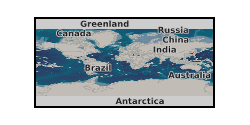
The TellusSW project acquired airborne geophysical data for the counties of Cornwall and parts of Devon and Somerset during the second half of 2013. The maps of the geophysical data and their derivatives are provided to facilitate spatial comparison with, and modelling of, the soil, geological and environmental aspects of the data. The survey comprised a high resolution magnetic/magnetic gradient survey combined with a multichannel (256 channel) radiometric survey. The survey was carried out using 200 m (N-S) line separations at a mean elevation of 91 m. The survey provided 60,323 line-km of data.
-
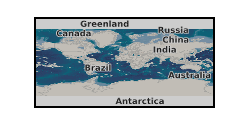
High Resolution, Airborne Magnetic, Radiometric, VLF Survey over north Midlands of GB. Survey flying for the collaborative BGS and World Geoscience Corporation Ltd (WGC) high resolution geophysical and environmental survey was completed in early September 1998. The data comprise multi-channel gamma ray spectrometer, magnetometer and dual frequency VLF-EM. Flight line spacing was 400 m with tie lines at 1200 m and the total area surveyed is some 14 000 km2. Flight-line orientations are W–E over the western survey area, SW–NE over the eastern area. Ground clearance was maintained at 90 m in rural areas, increasing to about 240 m in built-up zones.
-
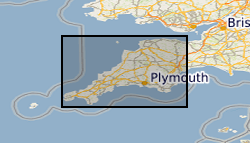
Airborne geophysical data acquired as part of the BGS-NERC TellusSW project (http://www.tellusgb.ac.uk/) during the second half of 2013. The survey comprised a high resolution magnetic/magnetic gradient survey combined with a multichannel (256 channel) radiometric survey. The survey was carried out using 200m (N-S) line separations at a mean elevation of 91m. Encompassing the counties of Cornwall and parts of Devon and Somerset, the survey provided 60,323 line-km of data. Digital data and derived (e.g. spatial derivatives) maps of the geophysical information are provided to facilitate spatial modelling of the soil, geological and environmental aspects of the data.
-
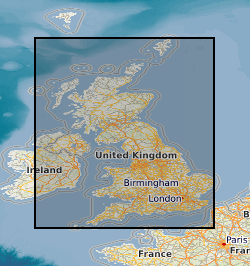
Digital one-minute values of the Geomagnetic field elements from Lerwick, Eskdalemuir and Hartland Observatories. Data are available from 1979 up to the present day. Most data are definitive, but recent data (within the last 2-3 years) and data between 1979 and 1982 are provisional and may be corrected in the future. The data from these observatories will not only aid scientific research into rates of change of the magnetic field and increase the accuracy of the BGS Global Geomagnetic Model, but will also provide data to exploration geophysicists engaged in current and future oil exploration.
-

The HiRES-1 project acquired airborne geophysical data during 1998. Coverage included the Central Midlands of England and into the associated Welsh Borderland. Survey flying for the collaborative BGS and World Geoscience Corporation Ltd (WGC) high resolution geophysical and environmental survey was completed in early September 1998. The data comprise multi-channel gamma ray spectrometer, magnetometer and dual frequency VLF-EM. Flight line spacing was 400 m with tie lines at 1200 m and the total area surveyed is some 14 000 km2. Flight-line orientations are W–E over the western survey area, SW–NE over the eastern area. Ground clearance was maintained at 90 m in rural areas, increasing to about 240 m in built-up zones. The project and data descriptions are provided in an internal BGS report: R J Peart, R J Cuss, D Beamish and D G Jones, 2003. The High Resolution Airborne Resource and Environmental Survey- Phase 1 (HiRES-1): background, data processing and dissemination and future prospects. British Geological Survey Internal Report, IR/03/112. 28pp.
-
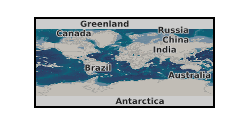
Over 22000 km of corrected aeromagnetic total intensity data from various surveys in offshore petroleum areas in UK Continental Shelf and overseas collected to assist directional drilling. Line separation is 2 km and flight altitude is 80 m above sea level and navigation is by GPS (Global Positioning System). Some surveys have been bought or commissioned on an exclusive basis by BGS and can be used without further ado, others require permission sought from the aeromagnetic survey company or end-client.
-

This layer of the map based index (GeoIndex) shows unadjusted ship gravity, magnetic and bathymetry data acquired by BGS as part of its Offshore Reconnaisance Mapping Programme. This programme commenced in 1967, and was funded mainly by the Department of Energy. Unadjusted ship gravity and bathymetry data from various commercial and academic surveys between 1965 and 1994. Confidential M.O.D Hydrographic Office integrated ship gravity and magnetics surveys of NW Europe marine areas for which BGS acts as agent. Network adjusted gravity and magnetic compilations of data from BGS and non-BGS sources.
-
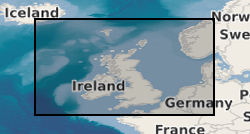
Analogue aeromagnetic surveys of Great Britain for the Geological Survey (GSGB), subsequently digitised. Commercial Analogue survey of North Sea by Aerosurveys Inc, subsequently digitised by BGS. Commercial digital (+ one analogue) surveys off NW/N/NE of Britain by Huntings Geology and Geophysics and ESL, purchased outright by BGS. Local surveys, digital and analogue aeromagnetic (+ other methods) surveys for BGS and commercial companies. Data acquired over many years by different companies. Surveys vary from High Resolution helicopter covering a few square kms to regional surveys covering 1000s of square kms. Some data recorded analogue, subsequently digitised, other data full digital capture with GPS navigation. Approximately 75% of the bounding rectangle covered. Flight line separation varies between 2km and 0.4km, line spacing typically 2km over UK but 0.4km over Devon/Cornwall. Flight line separation for Aerosurveys/Huntings surveys vary between 6.4 to 15 km. Detailed surveys at various resolutions. Along line spacing varies, analogue data: digitised from 1:63 360 and 1:253 440 scale map sheets and digital surveys: Decca navigation, 305m asl (above sea level). Local helicopter surveys, analogue and digital recordings, various survey heights. HiRES survey, full digital data capture at 0.1 sec intervals, GPS navigation, 90m survey height.
-
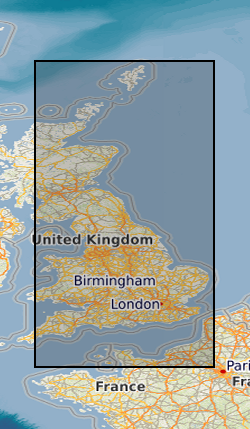
Digitised version of aeromagnetic survey records of Great Britain comprising a record for each digitised point, supported by survey and 'ends and bends' based line indexes. Original records include flight line records, worksheets, contour sheets and air photos provided by contractors at completion of each survey. Worksheets digitised by BGS during 1980's Smith and Royles 1989.
-
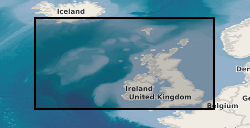
The surveys shown on the map based index (GeoIndex) include; Analogue airborne magnetic surveys of Great Britain for the Geological Survey (GSGB), commercial analogue survey of North Sea by Aeroservices Inc, subsequently digitised by BGS, commercial digital (+ one analogue) surveys off NW/N/NE of Britain by Huntings Geology and Geophysics, purchased outright by BGS and Local surveys, digital and analogue aeromagnetic (+ other methods) surveys for BGS and commercial companies.
 NERC Data Catalogue Service
NERC Data Catalogue Service